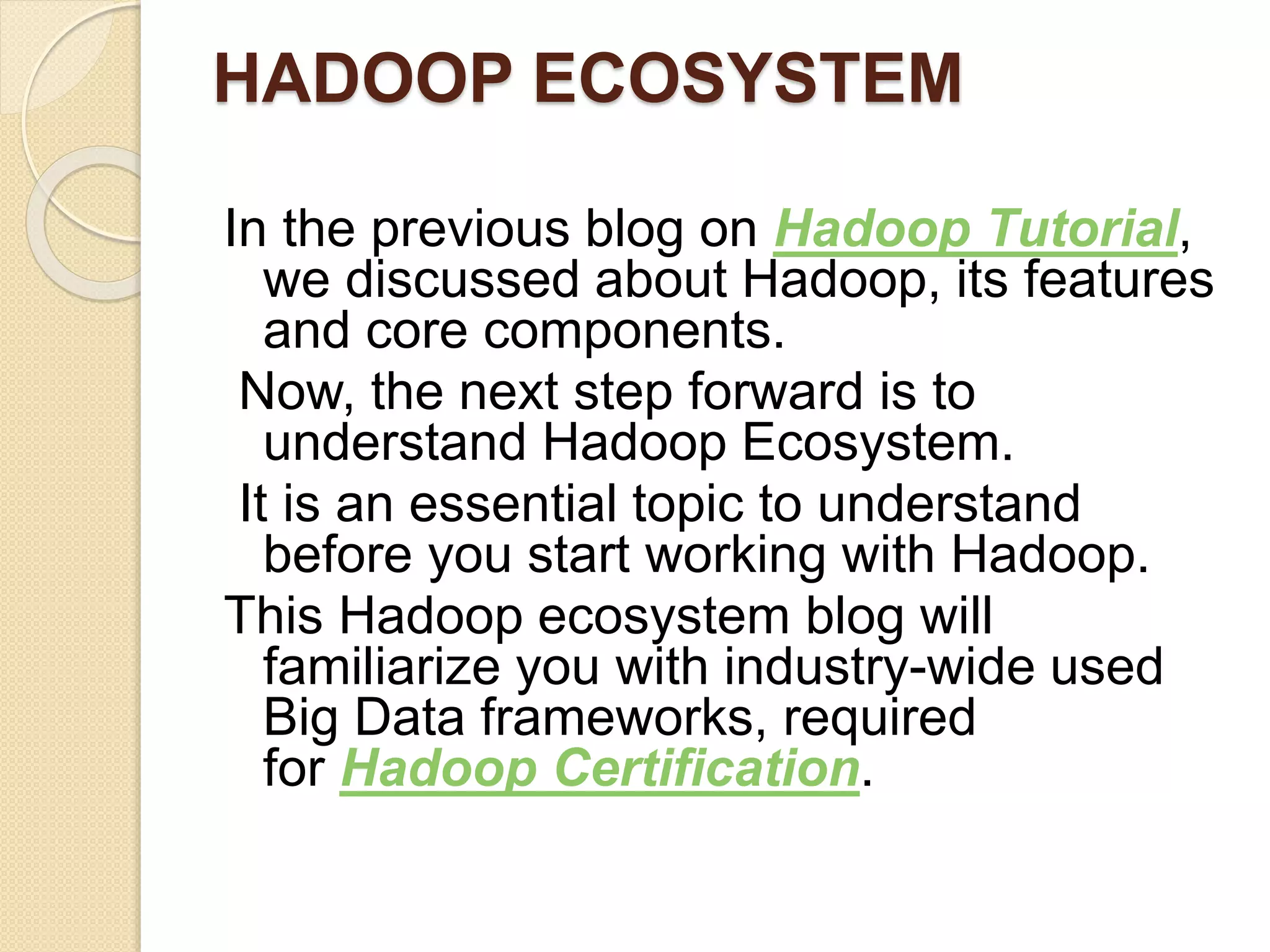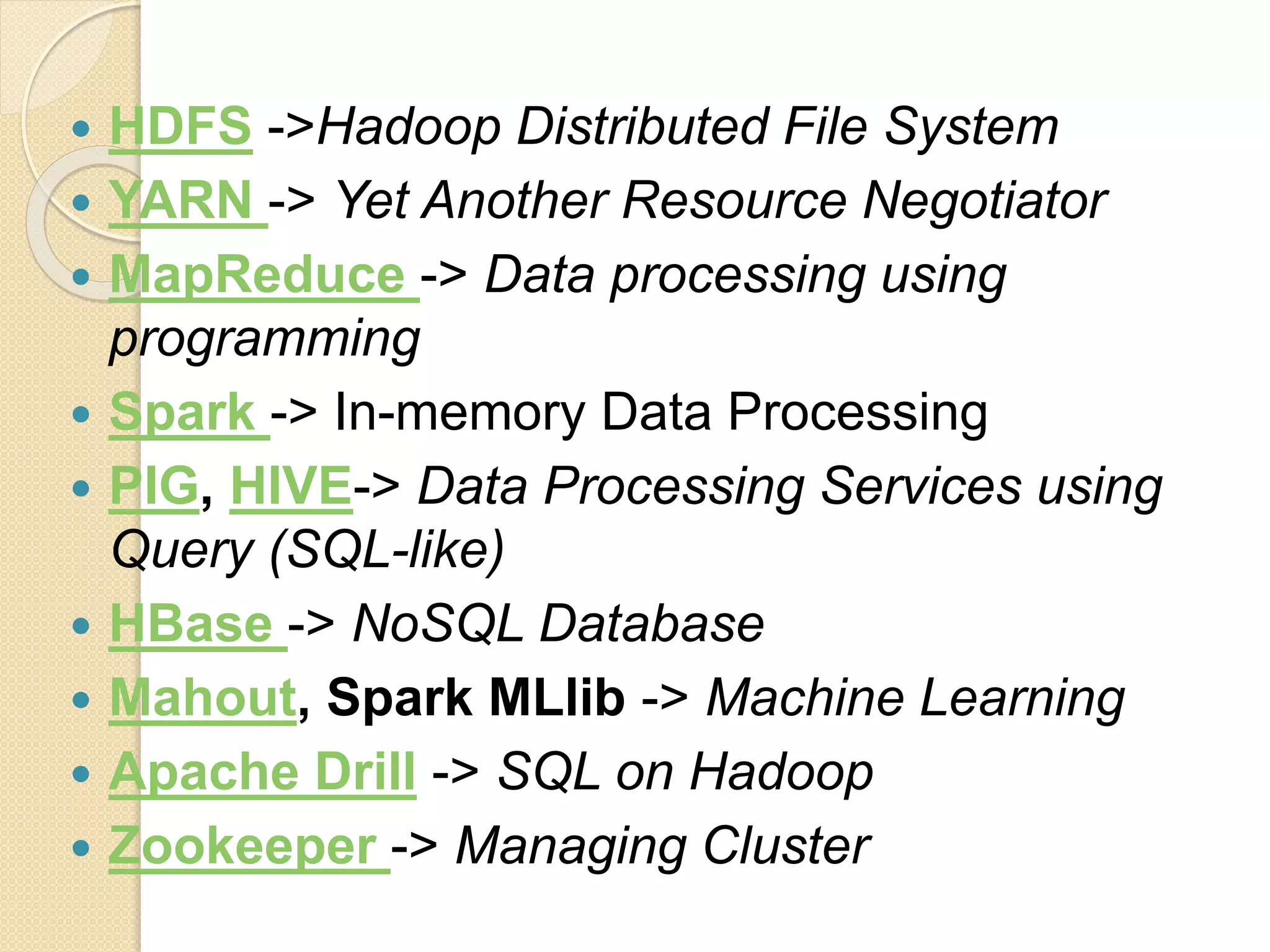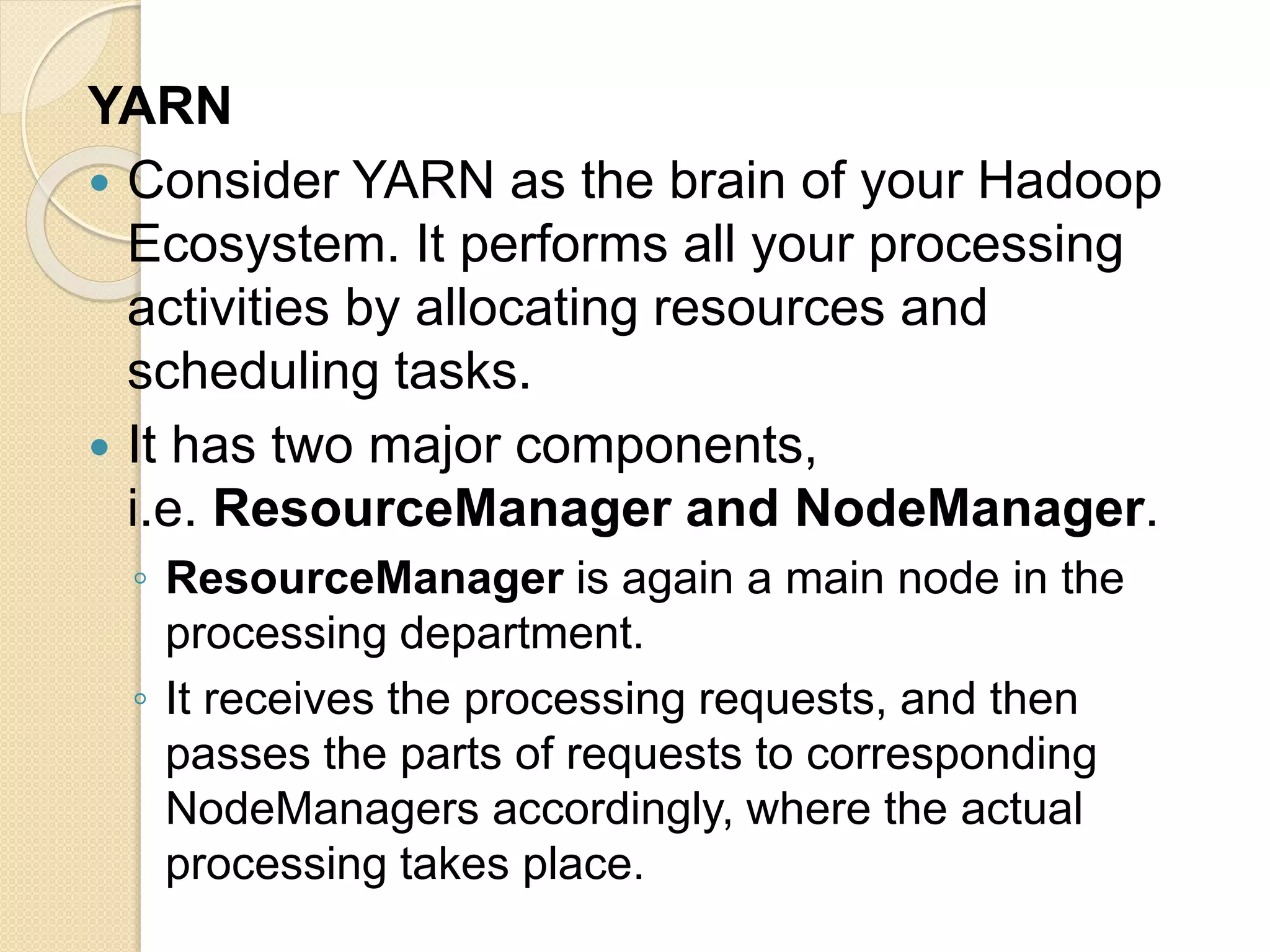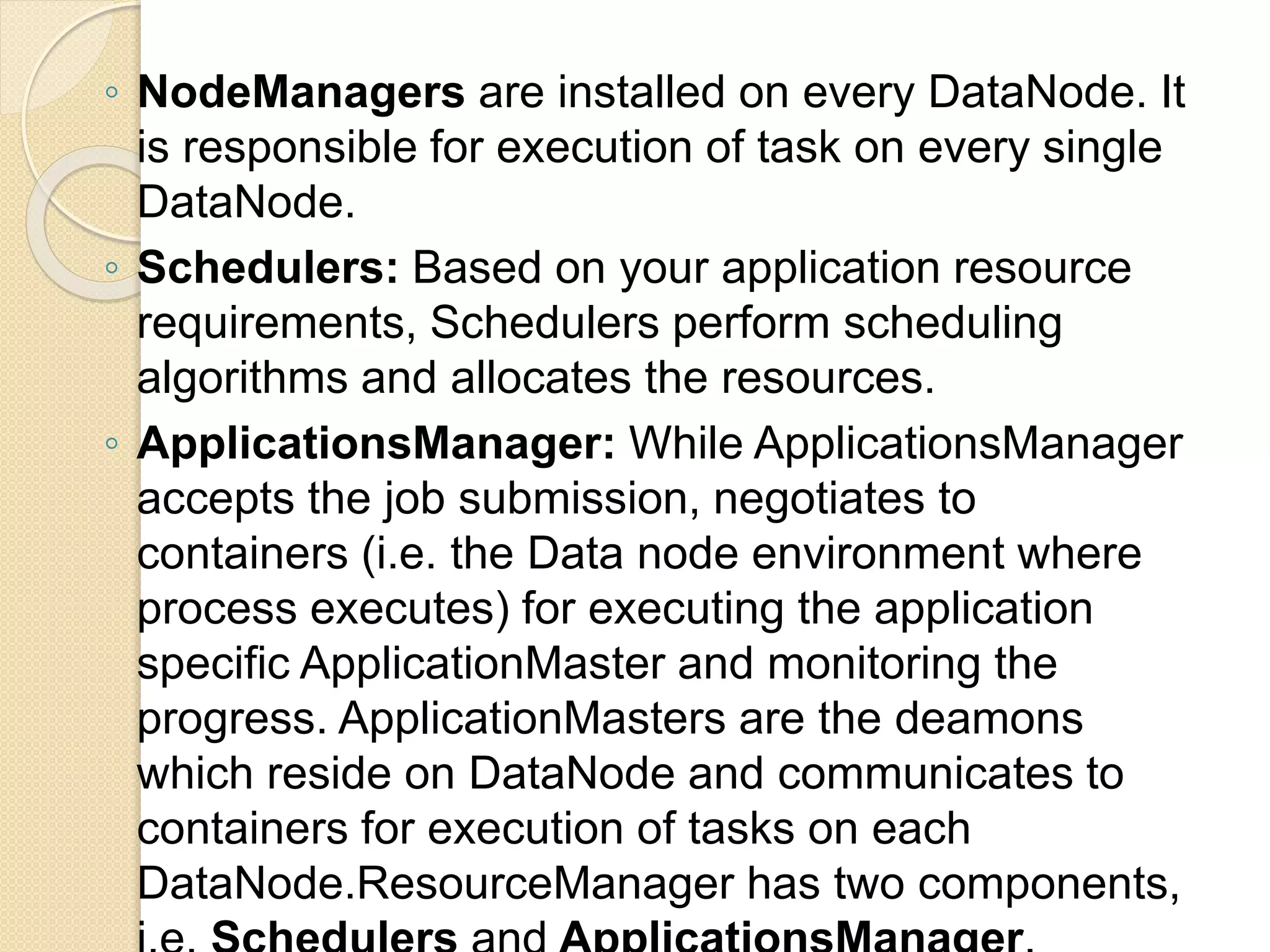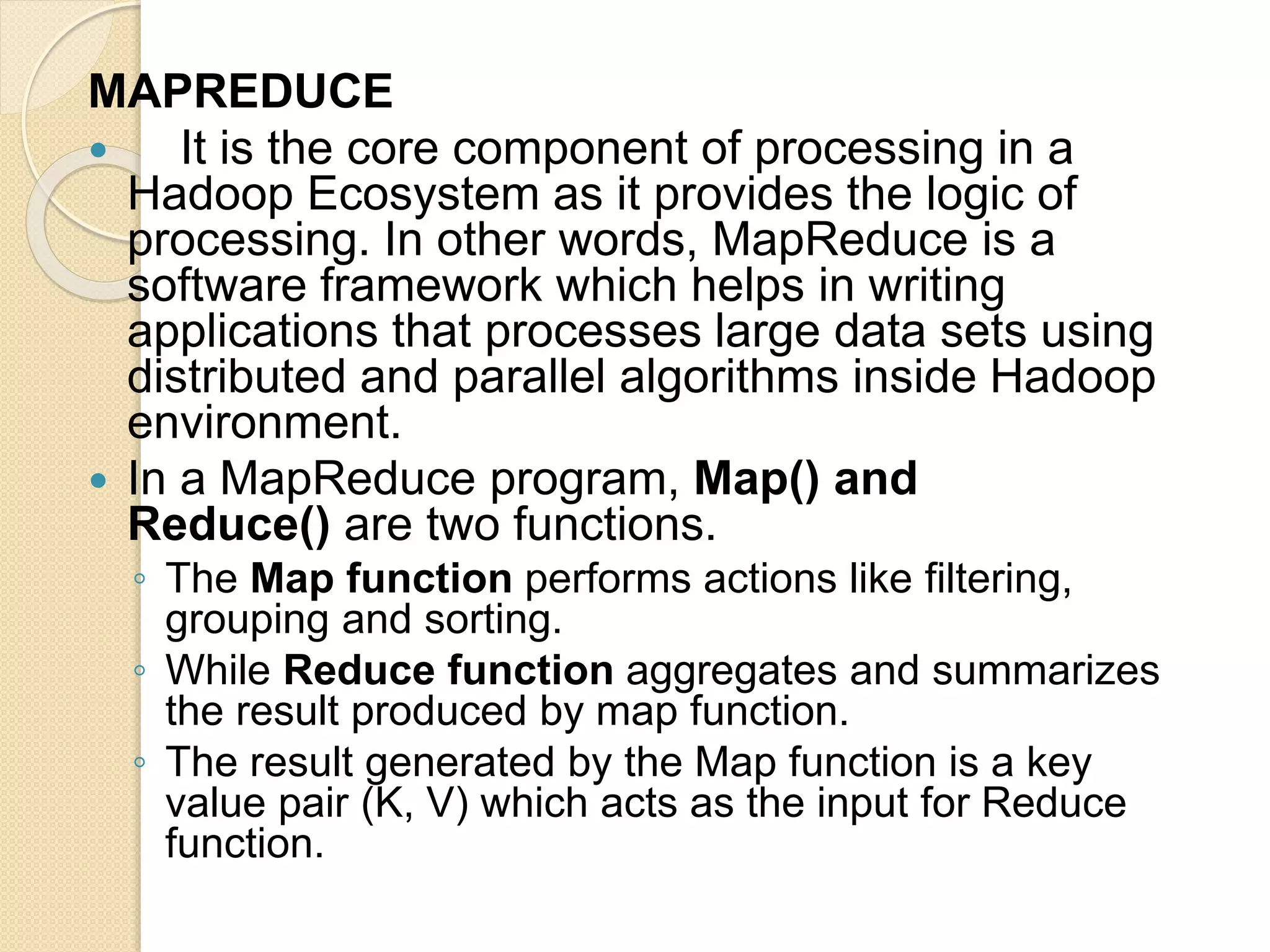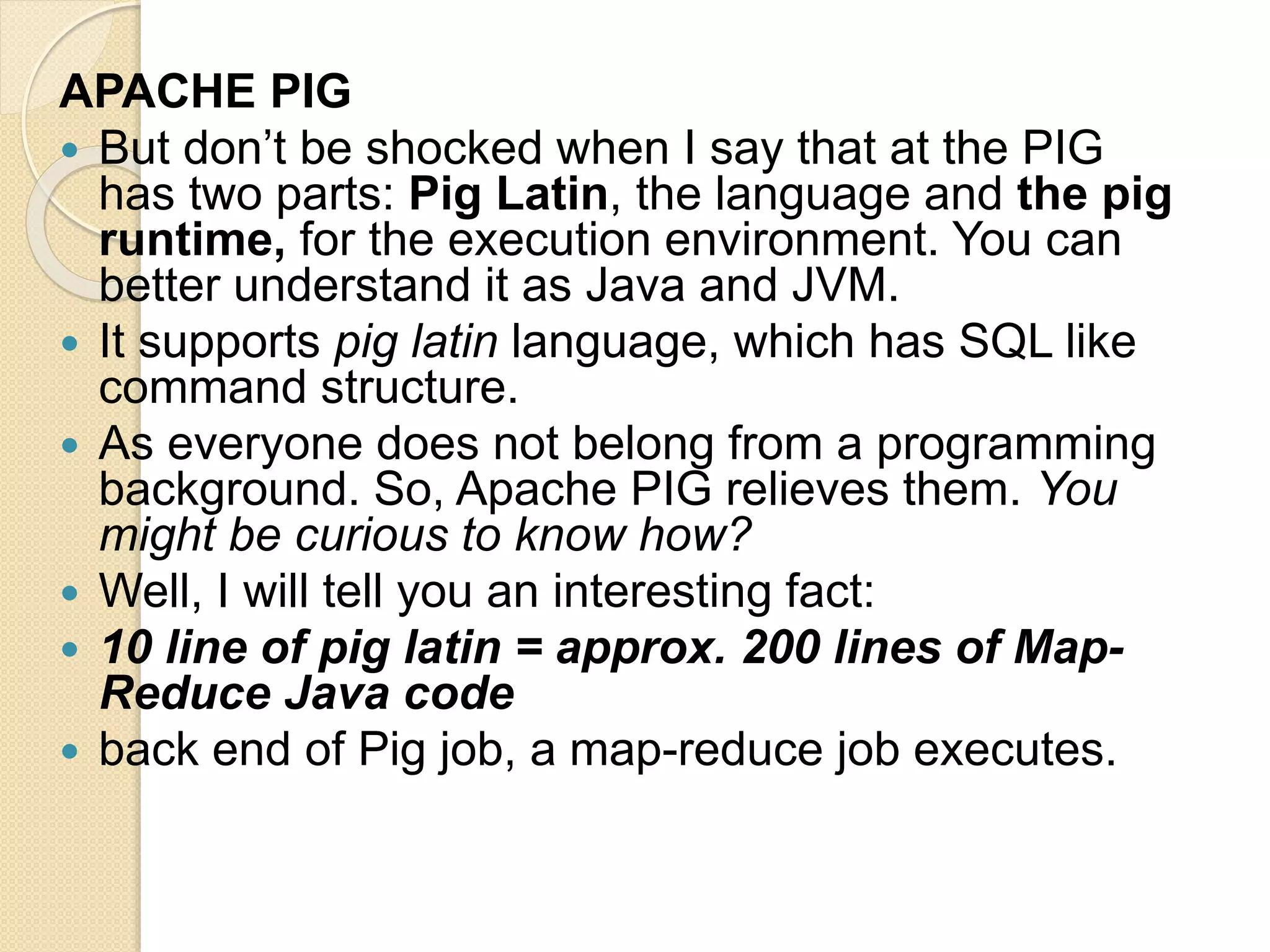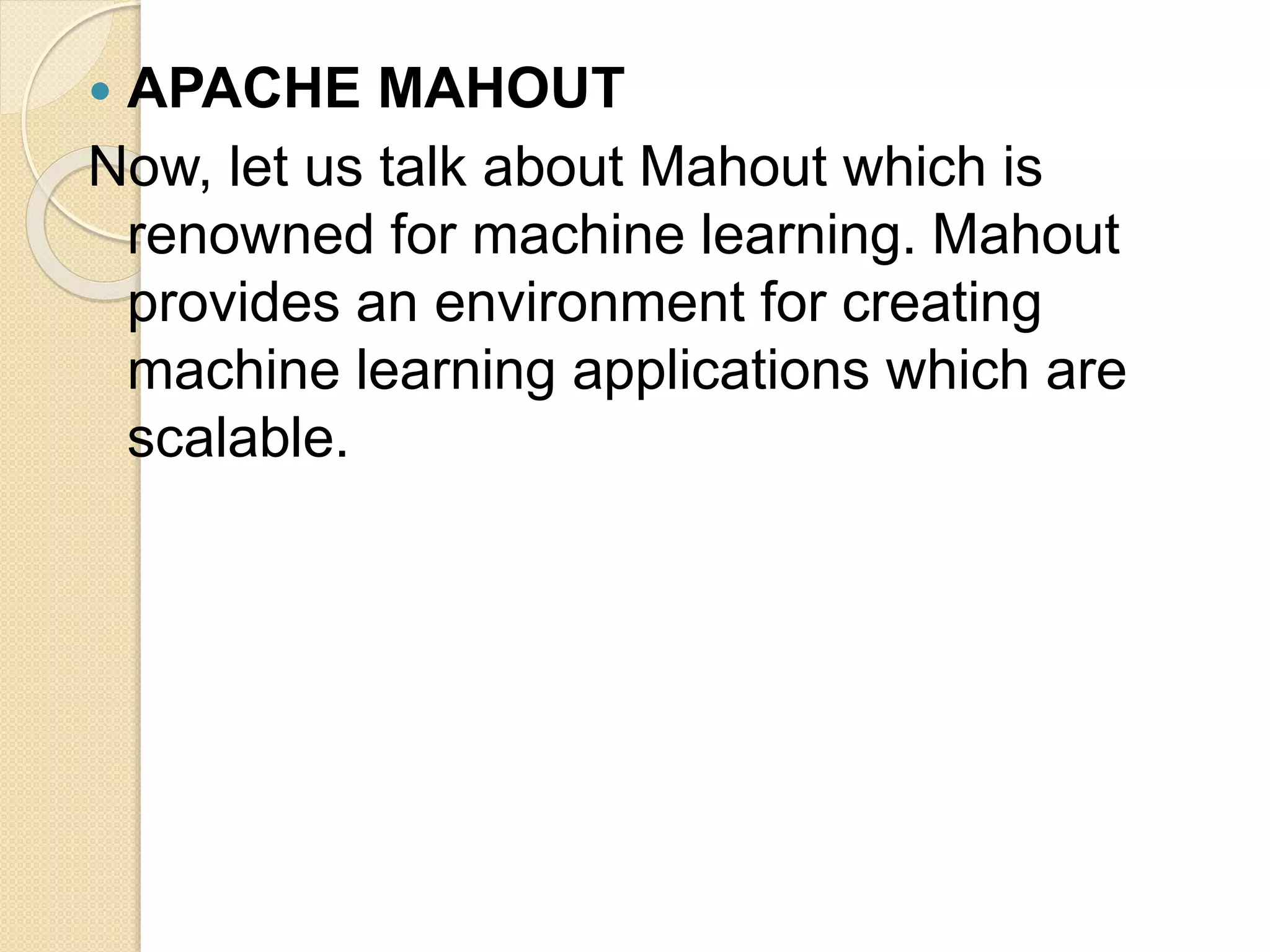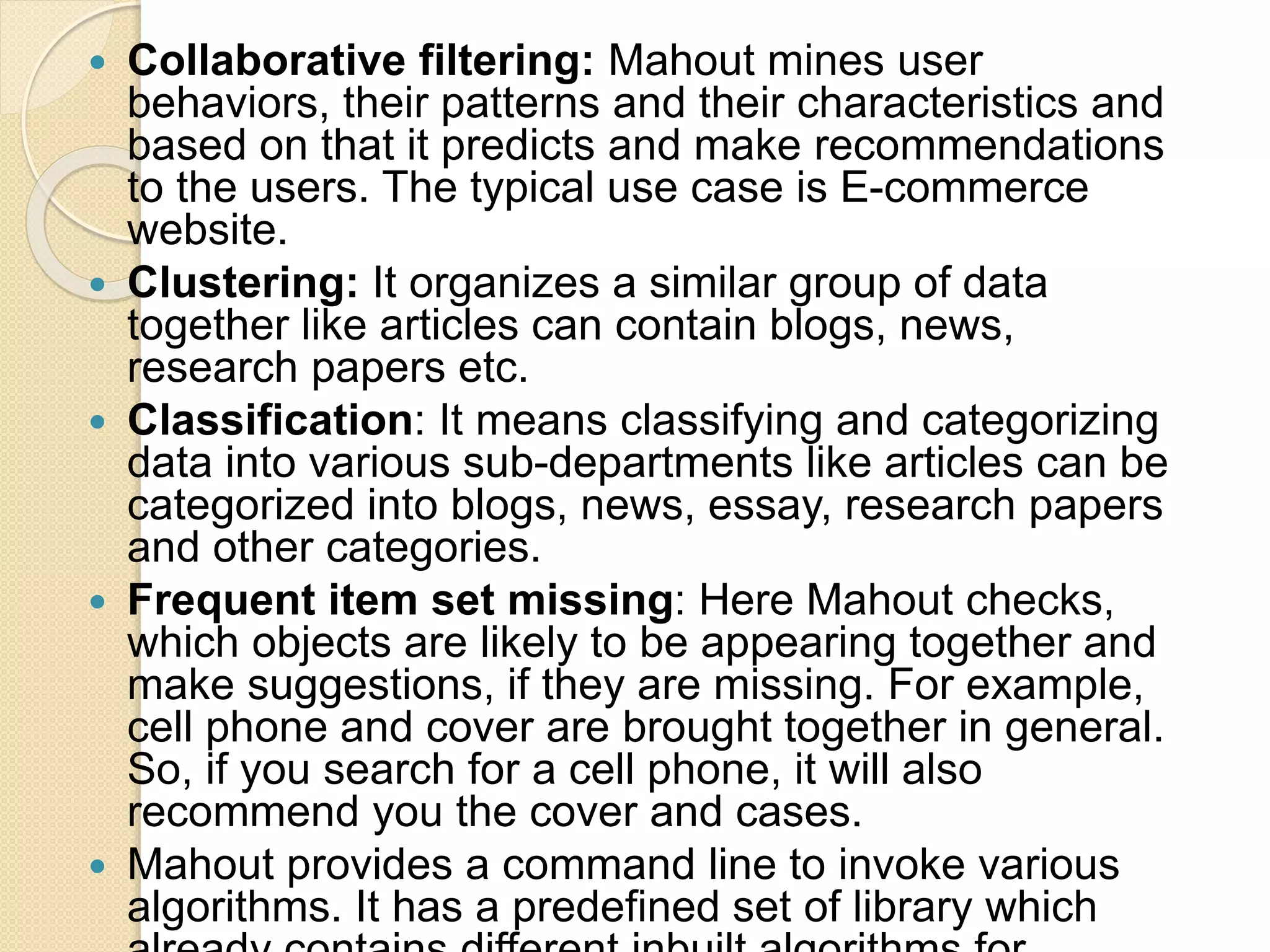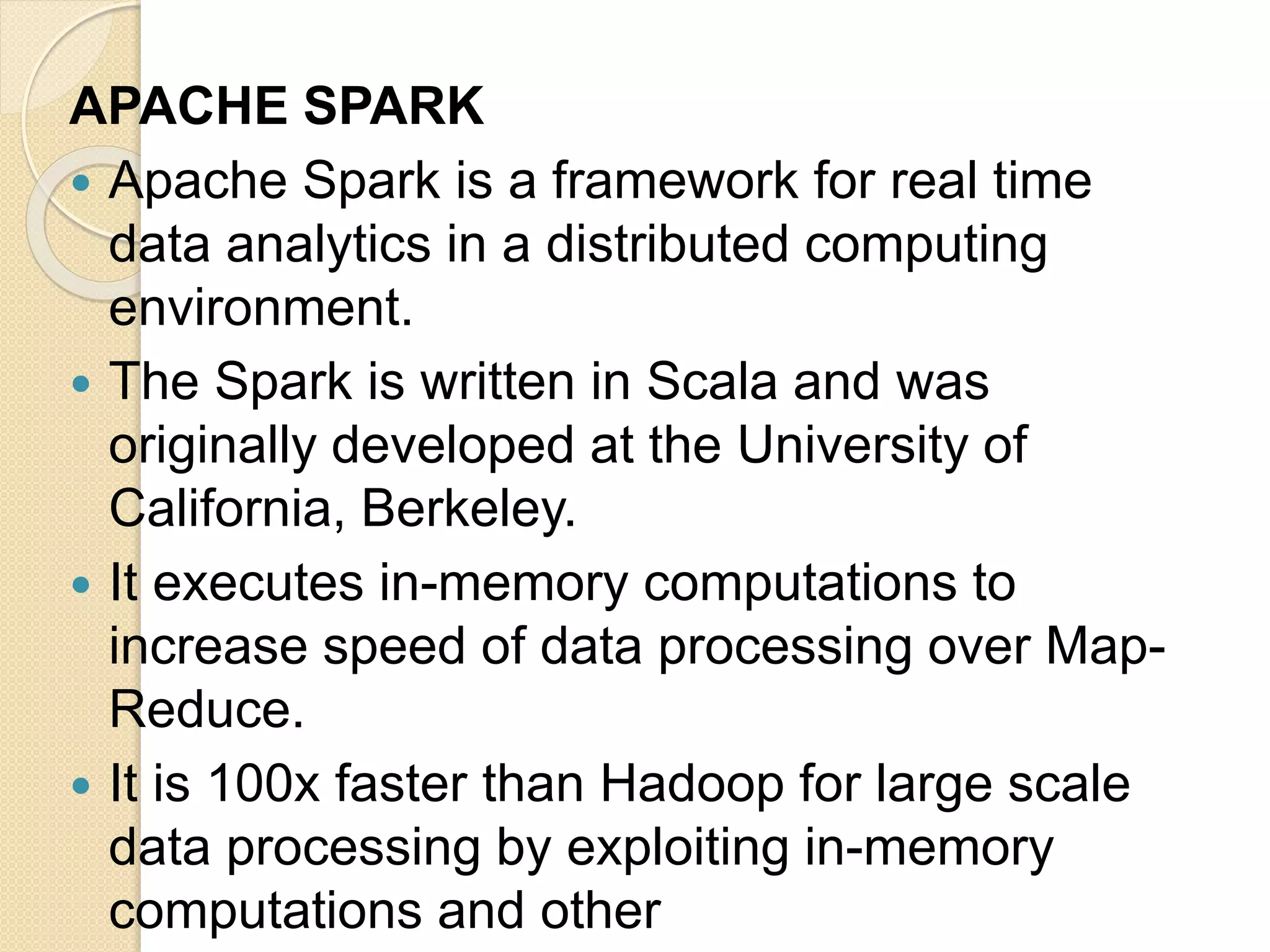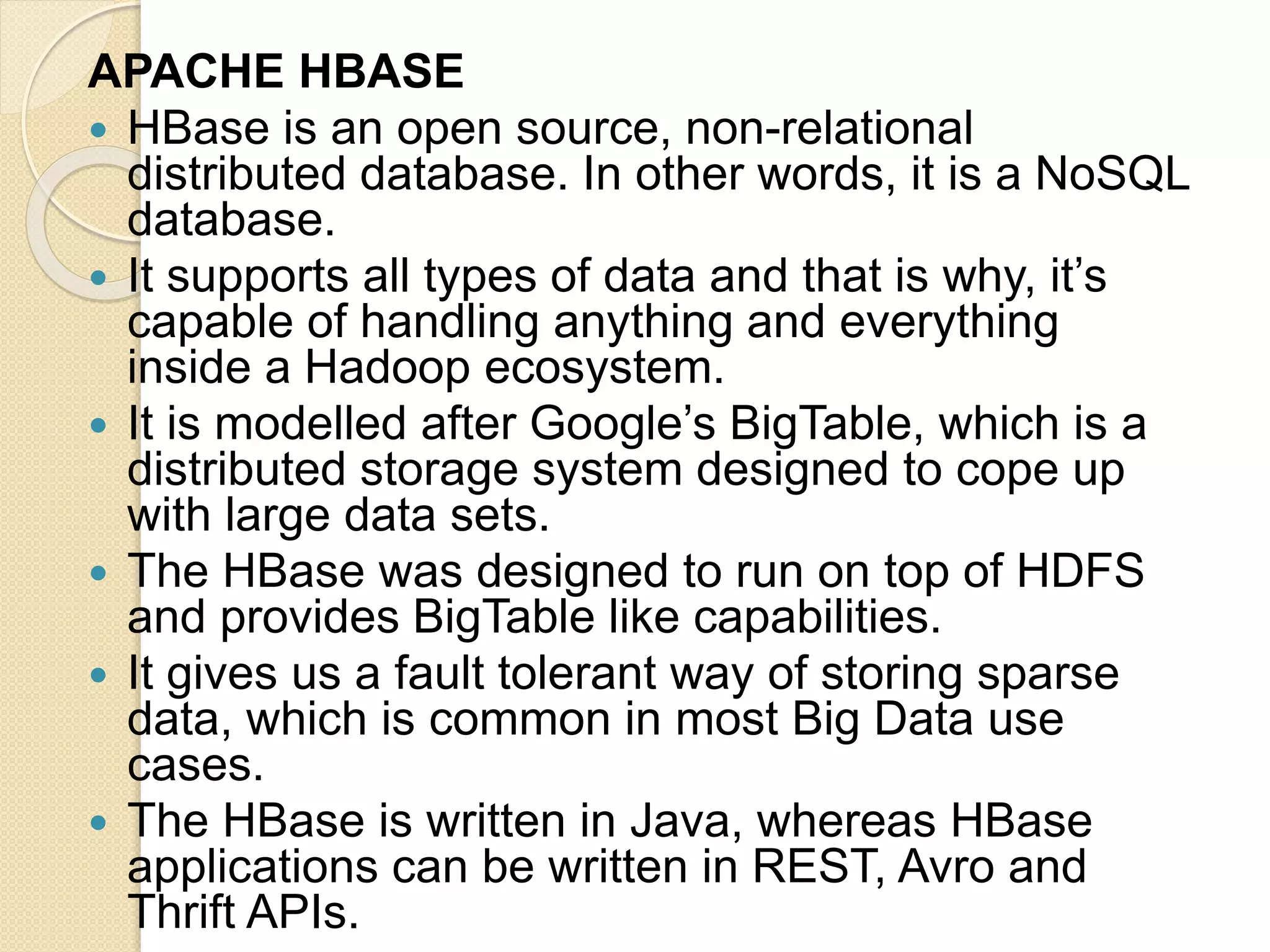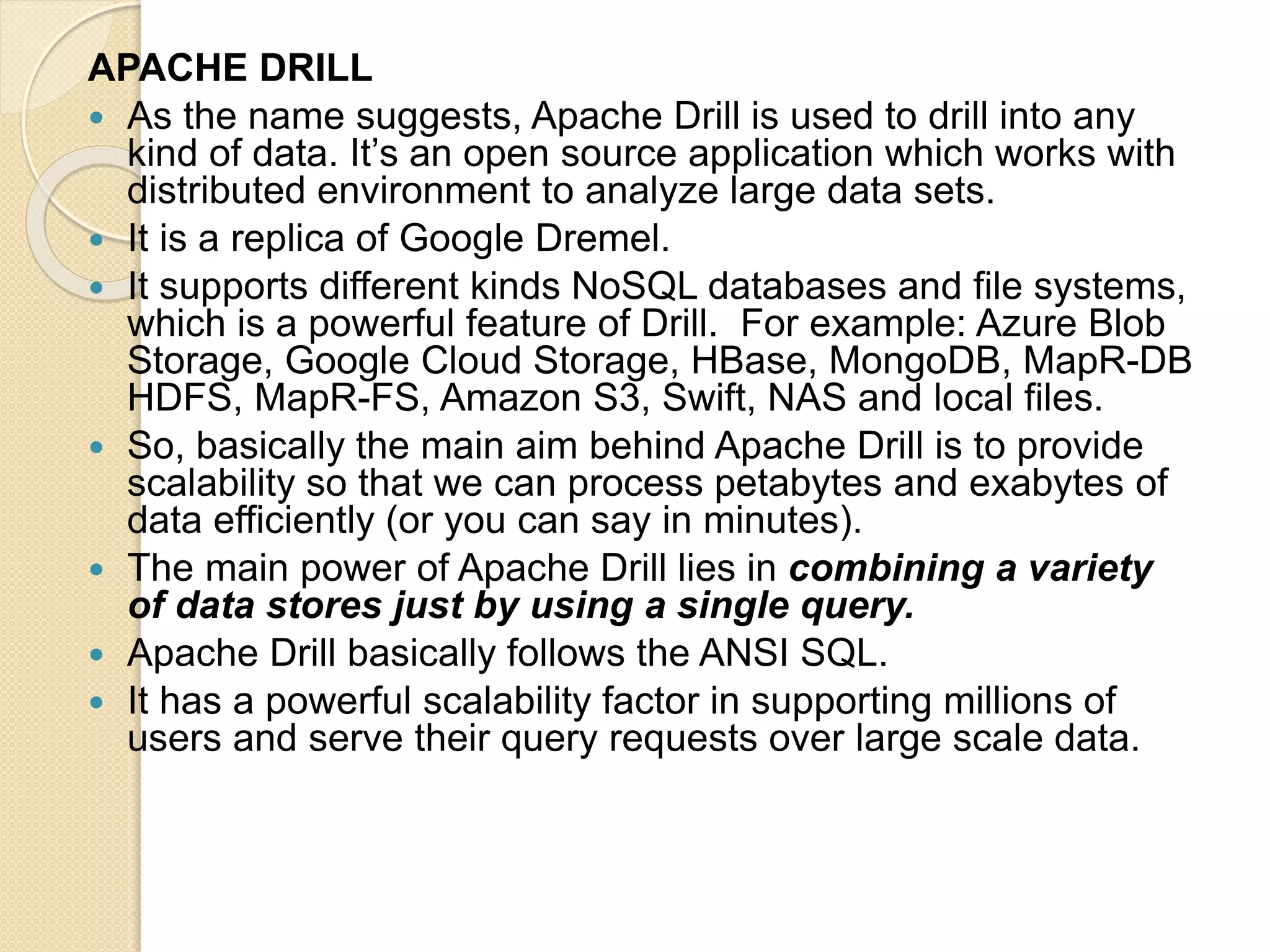The document discusses the Hadoop ecosystem, which includes components such as HDFS, YARN, MapReduce, Spark, Pig, Hive, HBase, Mahout, Drill, and Zookeeper. It provides overview explanations of the purpose and functionality of each component, with HDFS described as the core component for storing large datasets across nodes in a distributed manner. YARN is presented as responsible for allocating resources and scheduling tasks, with MapReduce providing the processing logic through map and reduce functions. Other components like Pig, Hive, Spark and HBase are explained as providing data processing capabilities through query languages or as distributed databases.

